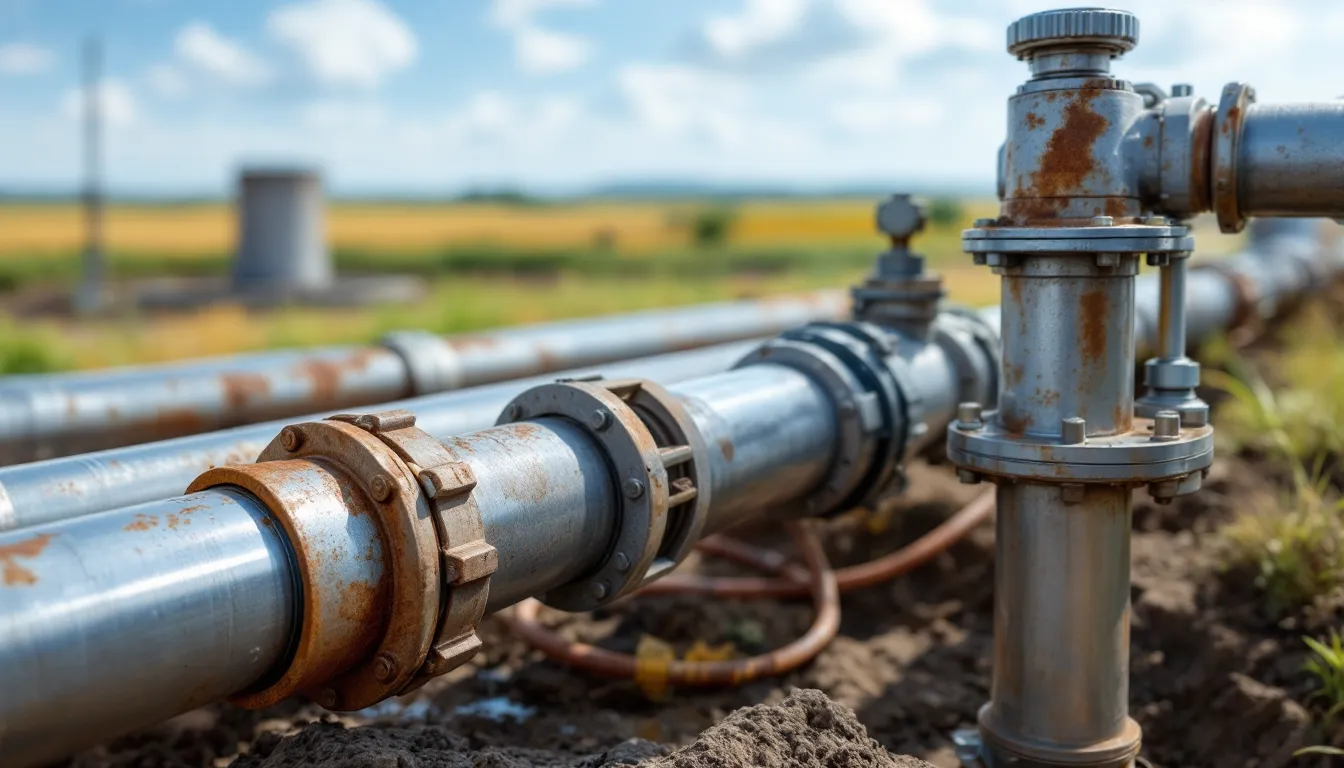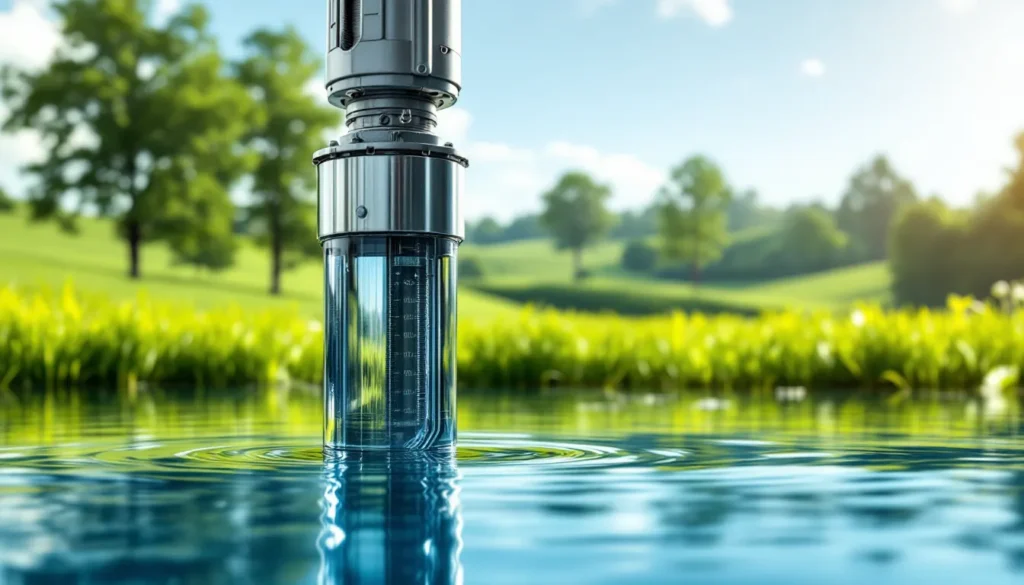Key Takeaways
- Identify Low Water Pressure Causes: Understand common issues like malfunctioning pumps, clogged pipes, and pressure tank problems to effectively address low water pressure in your well system.
- Types of Well Pumps Matter: Different well pumps (submersible, jet, convertible, and solar) have unique strengths and are suited for varying well depths, affecting overall water pressure.
- Adjust Pressure Settings and Tank Size: Regularly adjust the pressure switch and consider installing a larger pressure tank to enhance water pressure and reduce pump cycling during high-demand periods.
- Perform Regular Maintenance: Conduct inspections and seasonal maintenance to keep your well pump functioning optimally, addressing issues like leaks, clogs, and electrical connections to ensure consistent pressure.
- Monitor Water Usage Patterns: Be mindful of peak usage times to avoid temporary pressure drops, and consider implementing flow restrictors to balance demand within your household.
- Troubleshoot Systematic Issues: Identify and resolve common problems such as low water levels, clogged filters, and air leaks to maintain effective operation and reliable water pressure in your system.
If you rely on a well pump for your water supply, you know how vital consistent water pressure is for daily tasks. Low water pressure can be frustrating, affecting everything from showering to watering your garden. Thankfully, there are practical steps you can take to boost the pressure and improve your water flow.
Understanding the causes of low water pressure is the first step in finding a solution. Whether it’s a malfunctioning pump, clogged pipes, or issues with the pressure tank, identifying the root cause can help you address the problem effectively. In this article, you’ll discover actionable tips and techniques to increase water pressure on your well pump, ensuring you enjoy a steady and reliable water supply.
Understanding Well Pumps
Well pumps play a crucial role in delivering water from underground sources to your home. Knowing the types and functionality of well pumps helps you address issues like low water pressure effectively.
Types of Well Pumps
- Submersible Pumps: Submersible pumps sit underwater in the well and push water to the surface. They work efficiently in deeper wells and maintain consistent water pressure.
- Jet Pumps: Jet pumps sit above ground and use suction to draw water from the well. They perform well in shallow wells but face challenges in deeper ones.
- Convertible Pumps: Convertible pumps can function as either a jet or submersible pump, offering flexibility based on well depth.
- Solar Pumps: Solar pumps utilize solar energy to operate, promoting sustainability and reducing electricity costs. They’re effective in remote locations with limited access to power.
Functionality of a Well Pump
Well pumps operate by creating a difference in pressure. When activated, the pump draws water into the system and pushes it through your plumbing. Key parts include:
- Motor: The motor drives the pump mechanism, converting electrical energy into mechanical energy.
- Impellers: Impellers move water inside the pump, generating pressure that pushes water upward.
- Check Valves: Check valves prevent backflow, ensuring water flows only in one direction.
- Pressure Switch: The pressure switch monitors water pressure and activates or deactivates the pump as needed, maintaining optimal flow rates.
Understanding these components enables effective troubleshooting of issues related to water pressure.
Factors Affecting Water Pressure

Understanding the factors that influence water pressure helps in diagnosing and fixing issues with your well pump. Several elements can contribute to low water pressure, including well depth, pipe size, and overall water usage.
Depth of the Well
Well depth directly impacts water pressure. A deeper well requires a more powerful pump to raise water to the surface, which can strain the system and reduce efficiency. If your well exceeds 150 feet, it’s vital to ensure that your pump capacity matches the depth. For instance, submersible pumps are often necessary for depths greater than 200 feet to maintain optimal pressure.
Pipe Size and Condition
Pipe size and condition significantly influence water flow and pressure. Narrow pipes restrict water movement, leading to pressure loss, while wider pipes generally allow for better flow. Assess your pipe diameter; a minimum of 1 inch is recommended for effective water distribution. Additionally, inspect for corrosion or blockages. Clogged pipes or fittings can decrease pressure considerably, so regular maintenance and prompt repairs are essential.
Water Demand and Usage
Water demand and usage patterns affect overall pressure. High simultaneous usage, such as multiple faucets or appliances running, can temporarily lower pressure. Assess peak usage times and consider spreading out water tasks to minimize strain. Implementing flow restrictors on faucets can help balance usage and pressure. Installing a pressure tank with greater capacity can also alleviate pressure drops during high demand periods.
How to Increase Water Pressure on Well Pump
Improving water pressure on your well pump involves specific steps that address common issues. Consider the following methods to enhance your water flow and ensure reliable access.
Adjusting the Pressure Switch
Adjusting the pressure switch can boost water pressure effectively. Locate the pressure switch, often situated near the pressure tank. Use a screwdriver to access the adjustment screws. Turning the ‘increase’ screw (usually marked) clockwise raises the cut-in and cut-out pressure settings. Typical settings range from 30/50 psi to 40/60 psi, so check your current levels before making adjustments. Once adjusted, monitor the system for stability in pressure.
Installing a Pressure Tank
Installing a larger pressure tank can significantly improve water pressure and reduce pump cycling. A larger tank stores more water, minimizing strain on the pump during high-demand periods. Choose a tank that matches your household’s needs; tanks typically range from 20 to 120 gallons. Ensure proper installation with adequate support and piping to connect it to the system. After installation, check the pressure setting and adjust the pressure switch for optimal performance.
Cleaning or Replacing Filters
Cleaning or replacing filters ensures unobstructed water flow, thus improving pressure. Inspect the filter regularly as sediment builds up over time. Remove the filter and rinse with water to eliminate blockages. If the filter is damaged or excessively clogged, replace it with a new one. Stick to the manufacturer’s specifications when selecting replacement filters to maintain system integrity. Regular maintenance of filters keeps your water pressure consistent and improves overall efficiency.
Maintenance Tips for Optimal Pressure
Maintaining your well pump ensures consistent water pressure and a reliable supply. Regular maintenance practices help prevent issues and prolong the pump’s lifespan.
Regular Inspections
Conduct regular inspections of your well pump system to identify potential problems early. Check components such as:
- Pump and motor: Look for any signs of wear or damage.
- Pressure tank: Inspect for leaks or corrosion.
- Pipes: Examine for blockages, cracks, or rust.
- Electrical connections: Ensure all wiring is secure and in good condition.
Addressing these issues promptly can help maintain optimal pressure and prevent costly repairs down the line.
Seasonal Maintenance
Seasonal maintenance enhances the performance of your well pump. Implement these tasks:
- Winter preparations: Insulate exposed pipes and ensure your pump is functioning properly to prevent freezing.
- Spring check: After winter, check for debris or build-up in your system that might affect pressure.
- Summer Demand: Test your pump for efficiency during peak usage times to ensure it can handle increased water demands.
These seasonal tasks help keep your system functioning efficiently year-round.
Troubleshooting Common Issues
Troubleshoot common issues affecting water pressure systematically:
- Low water level: Verify if the well has sufficient water; a drop in levels can lead to pressure loss.
- Clogged filters: Replace or clean clogged filters to restore proper flow and pressure.
- Faulty pressure switch: Test the pressure switch for proper operation and adjust it if necessary.
- Air leaks: Inspect connections and fittings for air leaks that could disrupt pressure.
Identifying and resolving these common issues ensures your well pump operates effectively and maintains consistent water pressure.
Conclusion
Boosting water pressure from your well pump doesn’t have to be a daunting task. By understanding the components of your system and implementing practical solutions like adjusting the pressure switch or upgrading your pressure tank, you can achieve a reliable water supply. Regular maintenance is key to preventing issues that can lead to low pressure.
Stay proactive by checking your equipment and addressing any problems as they arise. With these strategies in place, you’ll enjoy consistent water flow for all your daily needs, ensuring your well pump operates at its best.

Hi, I’m Md Rofiqul, a gardening enthusiast who loves spending time in the garden and backyard. I enjoy caring for plants, growing flowers and vegetables, and creating a green space that feels peaceful and refreshing. Gardening is more than just a hobby, it’s a passion that connects me to nature and brings joy to my daily life. Living with plants inspires me to embrace simplicity, patience, and sustainability while making every day more colorful and rewarding.
